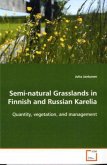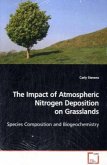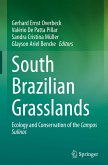The capability of a large part of vascular plant species to reproduce sexually and vegetatively plays an important role in many ecosystems. However, the role of clonality in structuring plant communities and costs possibly related to clonal growth are not fully understood. In this study I established trade-offs related to vegetative spread and sexual reproduction for seven congeneric phalanx and guerrilla species-pairs. The extensive spacer network of guerrilla species reduced their investment in generative reproduction on the ramet- as well as on the population level. Furthermore, I showed that traits related to morphological attributes of clonal growth may help to predict occurrence and abundance of plant species in dry grasslands. Finally, the influence of site conditions and nutrient availability on clonal traits was clarified. Higher nutrient availability favours species capable of extensive lateral spread, while nutrient deprivation seems to favour compact architectures. Insummary, processes and patterns related to vegetative reproduction may, thus, play a vital role in driving species coexistence in dry grassland communities.
Bitte wählen Sie Ihr Anliegen aus.
Rechnungen
Retourenschein anfordern
Bestellstatus
Storno








